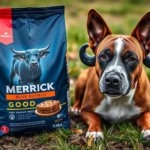
Introduction
Understanding dog nutrition is crucial for ensuring the health and well-being of our furry companions. A balanced diet plays a significant role in a dog’s overall health, affecting everything from energy levels to skin condition. One food item that often comes up in discussions about canine diets is salmon skin. Known for its rich nutritional profile, salmon is frequently suggested as a healthy addition to a dog’s diet. But can dogs eat salmon skin? In this article, we will explore the benefits and risks associated with feeding salmon skin to dogs and provide guidelines on how to do so safely.
Understanding Dog Nutrition
Basic Nutritional Needs of Dogs
Dogs require a balanced diet consisting of macronutrients and micronutrients to thrive. The three main macronutrients are:
- Proteins: Essential for growth, repair, and overall body function.
- Fats: Provide energy and are vital for healthy skin and coat.
- Carbohydrates: Supply a quick source of energy and aid in digestion.
In addition to these macronutrients, dogs also need a variety of vitamins and minerals to support various bodily functions, including immune health, bone strength, and metabolic processes.
Role of Protein in a Dog’s Diet
Proteins are a cornerstone of dog nutrition. They are made up of amino acids, which are necessary for building and repairing tissues, producing enzymes, and supporting immune function. There are two primary sources of protein:
- Animal-based proteins: Found in meat, fish, and eggs, these are considered high-quality proteins that provide all essential amino acids.
- Plant-based proteins: Sourced from legumes and grains, these can be beneficial but may lack one or more essential amino acids.
High-quality protein sources are crucial for maintaining a dog’s energy levels and promoting overall health.
Fats and Omega Fatty Acids
Fats are another vital component of a dog’s diet. They provide a concentrated source of energy and are essential for absorbing fat-soluble vitamins (A, D, E, and K). Among these fats, Omega-3 and Omega-6 fatty acids play a particularly important role in maintaining skin health, reducing inflammation, and supporting cognitive function.
Salmon as a Nutritional Source for Dogs
Nutritional Profile of Salmon
Salmon is not only a delicious treat for dogs but also a nutrient-rich food. It contains:
- High-quality proteins
- Omega-3 fatty acids (EPA and DHA)
- Vitamins A, B12, and D
- Essential minerals like selenium and potassium
These nutrients contribute to various health benefits, making salmon a popular choice among pet owners.
Benefits of Feeding Salmon to Dogs
Incorporating salmon into a dog’s diet can provide numerous health benefits, including:
- Improved coat health: The Omega-3 fatty acids in salmon can promote a shiny, healthy coat and reduce skin irritations.
- Joint support: Omega-3s are known for their anti-inflammatory properties, which can help alleviate joint pain and improve mobility, particularly in older dogs.
- Cognitive function: The nutrients in salmon have been linked to better brain health, potentially reducing the risk of cognitive decline in aging dogs.
Can Dogs Eat Salmon Skin?
Nutritional Value of Salmon Skin
When considering whether dogs can eat salmon skin, it’s essential to understand its nutritional value. Salmon skin is rich in:
- Omega-3 fatty acids
- Proteins
- Vitamins and minerals
In fact, the skin often contains higher concentrations of healthy fats compared to the flesh. This makes it a nutritious, albeit fatty, addition to a dog’s diet.
Health Benefits of Salmon Skin for Dogs
Feeding salmon skin can offer several advantages for dogs:
- Source of healthy fats: The Omega-3 fatty acids found in salmon skin contribute to skin and coat health, helping to reduce dryness and irritation.
- Enhanced flavor: Many dogs find salmon skin irresistible, making it an excellent treat or training reward.
Risks of Feeding Salmon Skin to Dogs
While there are benefits, there are also risks to consider when feeding salmon skin to dogs:
- Harmful bacteria: Salmon skin can harbor parasites or pathogens, particularly if raw or improperly cooked. To mitigate this risk, it’s crucial to ensure it is sourced from high-quality fish and cooked properly.
- Excessive fat: The high-fat content in salmon skin can lead to digestive issues, including pancreatitis, particularly in dogs with sensitive stomachs. Moderation is key.
- Quality matters: Always choose skin from wild-caught, high-quality salmon to minimize risks.
Guidelines for Feeding Salmon Skin to Dogs
Preparing Salmon Skin for Dogs
When preparing salmon skin for your dog, consider the following tips:
- Cooking methods: Baking or grilling salmon skin is the best option. These methods help eliminate harmful bacteria while retaining nutrients.
- Avoid seasoning: Never add salt, spices, or other seasoning to salmon skin, as these can be harmful to dogs.
Portion Control and Frequency
To ensure your dog’s health, it’s essential to practice portion control and understand how often to feed salmon skin:
- Serving sizes: A small piece of salmon skin can be a suitable treat for medium to large dogs; smaller dogs should receive even less.
- Frequency: Consider salmon skin as an occasional treat rather than a staple in your dog’s diet. Limit it to once or twice a week to prevent excessive fat intake.
Monitoring Your Dog’s Reaction
When introducing any new food, including salmon skin, it’s vital to monitor your dog’s reaction. Watch for signs of:
- Allergies: Symptoms may include itching, redness, or gastrointestinal upset.
- Digestive issues: Look for vomiting or diarrhea, which could indicate that salmon skin doesn’t agree with your dog.
Gradually introduce salmon skin into your dog’s diet to gauge their tolerance.
Alternative Fish Options for Dogs
Other Fish That Are Safe for Dogs
If you’re considering alternatives to salmon skin, several other fish are safe for dogs, including:
- Sardines: Packed with Omega-3s and low in mercury.
- Mackerel: A rich source of healthy fats and proteins.
- Herring: Another nutritious option, high in Omega-3s.
These alternatives provide similar health benefits without the same risks associated with salmon skin.
Comparing Salmon Skin with Other Fish Skin
Each type of fish skin can vary in nutritional content and potential risks:
- Sardine skin: Generally considered safe and nutritious, low in contaminants.
- Mackerel skin: Similar benefits to salmon skin, but ensure it is sourced sustainably.
- Herring skin: Offers healthy fats but should be given in moderation.
When selecting fish skin for your dog, always consider the source and preparation method.
Conclusion
In summary, while dogs can eat salmon skin, it should be done with caution and moderation. The nutritional benefits, including healthy fats and proteins, can enhance your dog’s diet, but the risks associated with bacteria and excessive fat intake cannot be overlooked. Always opt for high-quality, properly cooked salmon skin, and consult with your veterinarian if you’re unsure about incorporating new foods into your dog’s diet. By making informed choices, you can help ensure that your dog enjoys the health benefits of various nutritious foods while minimizing any potential risks.
FAQs
Can dogs eat raw salmon skin?
Raw salmon skin can pose risks due to harmful bacteria and parasites. It is advisable to cook salmon skin before feeding it to dogs.
What are the signs of salmon poisoning in dogs?
Signs include vomiting, diarrhea, fever, and lethargy. If you suspect salmon poisoning, seek veterinary care immediately.
How often can dogs eat salmon skin?
Salmon skin should be given as an occasional treat, ideally once or twice a week, depending on your dog’s overall diet and health.
Is salmon skin safe for all dog breeds?
While most dogs can safely consume salmon skin, individual sensitivities may vary. Always monitor your dog’s reaction and consult a vet if unsure.
Can dogs have salmon skin with seasoning?
No, it is best to avoid seasoning salmon skin, as many spices and additives can be harmful to dogs. Always serve it plain.









